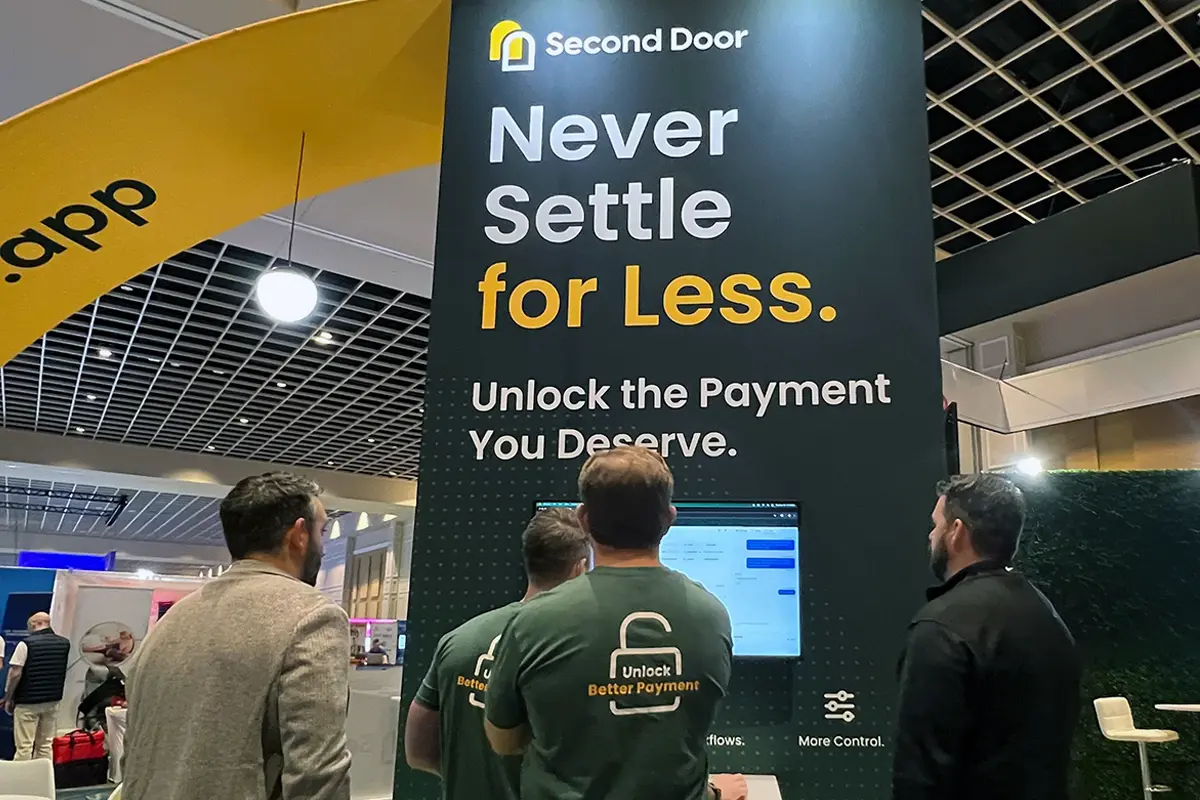
PPS 2025 Recap: A Week of Big Ideas, Better Payment, and a Lot of Keys
PPS 2025 had a different energy this year — lighter, more optimistic, and full of people ready to rethink how their practices grow. We heard it in the hallways, at the booth, in packed sessions, and even on Thursday night when seemingly every company in attendance hosted a party. There’s real momentum behind trying new ideas, especially when it comes to better payment and building a practice that isn’t held hostage by traditional reimbursement.
Second Door came with a simple message:
Never settle for less. It’s time to unlock the payment you deserve.
And judging by the conversations, demos, and traffic at our booth, the message hit home.
Here are the themes that stood out — the signals that the PT profession is shifting toward something healthier, more profitable, and more sustainable.
Growth is shifting from “more visits” to “better payment.”
Across the floor, the same sentiment echoed: the way PT has always grown no longer works. Volume isn’t enough, and the industry knows it.
What stood out this year was the openness, even excitement, around new revenue models.
Groups wanted to talk about:
- Direct contracting and employer partnerships
- Cash subscription and membership programs
- Rebalancing payer mix to reduce dependency on low-paying contracts
- Real cash pay strategy (not just “take cash if they ask”)
Scott Hebert and Michelle Babcock’s cash-pay session—in the last breakout slot of the conference—drew one of the strongest crowds of the conference: a room full of established practices looking for their next lever.

The shift is clear: the future of growth is about value, not volume.
The front office is becoming the engine of scale—and the industry is finally saying it plainly.
A big theme at PPS this year was the renewed focus on front office performance. Owners are feeling the pain of missed calls, inconsistent follow-up, and leaky processes that quietly drain revenue — and they’re looking for real systems, not shortcuts.
What stood out was how openly people talked about the front desk as a growth function, not just an administrative one. Even breakout sessions reinforced this shift. Jerry Durham’s session during pre-conference on the “ARRIVE, PAY, STAY” mindset captured what so many clinics are rediscovering: the front office isn’t overhead—it’s the first and most important part of the patient journey.
You could feel this at the Second Door booth, too. Conversations kept circling back to the same questions:
- How do we make follow-up consistent across every inbound channel (phone, web, fax, in-person)?
- How do we reduce no-shows without burning out staff?
- How do we use AI without creating more chaos?
The throughline was clear: technology works when the workflow works.

AI becomes powerful when it’s layered onto clean processes. A Digital Front Door becomes transformative when clinics know how they want leads handled. Lead management only works if teams are aligned on timing, messaging, and next steps.
PPS made one thing obvious: the clinics that systematize their front desk are the clinics that scale — and the clinics that will get the most out of AI in the coming years.
Direct care is moving from idea to action.
Employer contracting wasn’t a fringe topic at PPS this year. Many groups came to our booth with specific questions, even specific employers in mind, trying to understand:
“How do we build this into our growth strategy?”
At the same time, cash-pay programs have matured beyond “we offer cash rates.” Clinics are thinking about packaging, recurring revenue, subscriptions, and how to blend cash services into existing workflows without creating operational chaos.
Taken together, it’s obvious: direct care is becoming the next major revenue pillar for PT practices.
Not a side project—a revenue channel with an accompanying strategy.
The profession feels hopeful again—and it showed up everywhere.
Even with rising costs and shrinking reimbursement, PPS had a noticeably lighter, more optimistic energy. Owners weren’t chasing tweaks around the edges—they were exploring real shifts: direct contracts, cash pay, smarter front-office systems, and tools that actually support growth.
That sense of possibility carried beyond the sessions. The Thursday night parties, which we co-hosted along with Prompt Health and Stride EMR, were packed with people trading ideas and talking candidly about what’s working. The vibe wasn’t just social; it felt collaborative in a way the industry hasn’t seen in a while.

It all pointed to the same thing: people believe progress is possible again. Not wishful thinking—earned optimism rooted in new models and better tools.
When a profession starts talking this way—openly and collectively—it’s a sign the ground is shifting. And PT needs that shift now more than ever.
Thanks for an incredible week.
Whether you tried a key in our Revenue Vault, stopped by for a demo, sat in on our session, or talked long after the expo hall closed—thank you. We left PPS more convinced than ever that PT’s next chapter will be brighter than its last.
We’re excited about the direction this profession is heading.
We’re excited about the ideas PT leaders are embracing.
And we’re especially excited about helping practices get paid what they’re worth.
Let’s unlock what’s next (we can help you with that).







